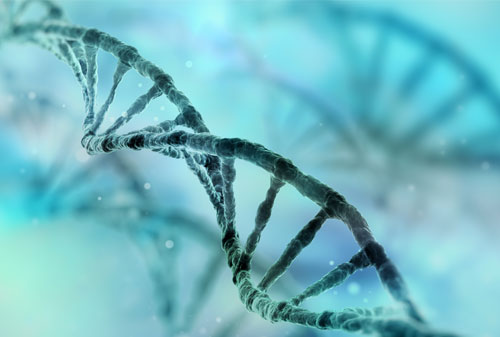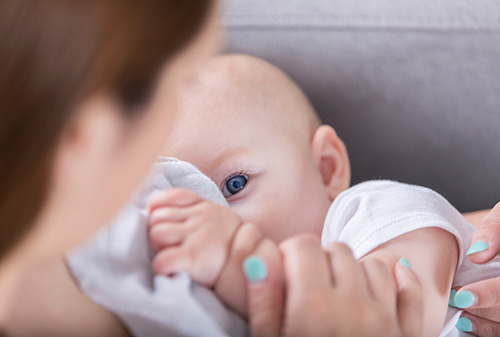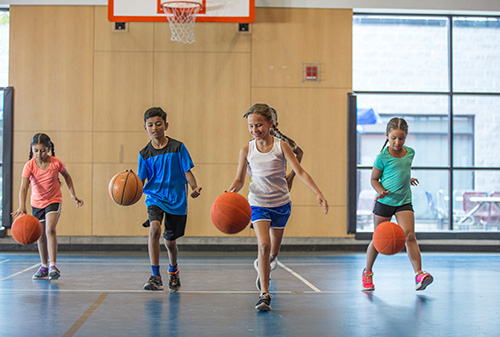




Just as individuals inherit characteristics such as eye colour from their parents, some medical conditions can be transferred to children by their parents. These are called genetic or hereditary defects. A genetic defect exists due to the presence of an abnormal gene in an individual's genetic make-up. This may be passed down from one or both parents but this may not be the case each time (for example, Down's syndrome).
Children may inherit a number of medical conditions and diseases from their parents which can affect their growth or physical development. These include:
Children with genetic defects may miss school due to infections and periods of hospitalisation which will affect their intellectual development. Children will lose out on opportunities to develop relationships with other children which can then affect their social and emotional development.
Fel y mae unigolion yn etifeddu nodweddion megis lliw llygaid gan eu rhieni, gellir trosglwyddo rhai cyflyrau meddygol i blentyn gan eu rhieni. Gelwir y rhain yn anhwylderau genetig neu etifeddol. Mae anhwylder genetig yn bodoli oherwydd presenoldeb genyn annormal mewn cyfansoddiad genetig unigolyn. Gall hyn gael ei etifeddu gan un neu'r ddau riant ond efallai na fydd hyn bob amser yn wir (er enghraifft, syndrom Down).
Gall blant etifeddu nifer o gyflyrau meddygol ac afiechydon gan eu rhieni sy’n gallu effeithio ar eu tyfiant neu ar eu datblygiad corfforol. Mae'r rhain yn cynnwys:
Gall plant ag anhwylder genetig golli ysgol oherwydd yr heintiau a chyfnodau yn yr ysbyty a bydd hyn yn effeithio ar eu datblygiad deallusol. Bydd plant yn colli cyfleoedd i ddatblygu perthnasoedd gyda phlant eraill a allai wedyn effeithio ar eu datblygiad cymdeithasol ac emosiynol.
Lorem ipsum dolor sit amet, consectetur adipisicing elit. Modi est praesentium earum exercitationem, accusantium molestiae asperiores reiciendis aliquam doloribus, delectus, cumque odio omnis rem, aliquid et. Quisquam eius, incidunt ab.
Lorem ipsum dolor sit amet, consectetur adipisicing elit. Modi est praesentium earum exercitationem, accusantium molestiae asperiores reiciendis aliquam doloribus, delectus, cumque odio omnis rem, aliquid et. Quisquam eius, incidunt ab.
Warning! This resource is not optimised for use on mobile devices.
Rhybudd! Ni ellir defnyddio’r adnodd yma ar ffonau symudol neu dabled.
Drag the terms to the correct definitions.
Llusgwch yr opsiynau a’u gosod yn y drefn rydych chi’n credu sy’n gywir.
Well done. You have matched them all correctly.
Da iawn. Rydych wedi paru pob un yn gywir.
Terms Termau |
Definitions Diffiniadau |
Correct answers |
|---|
Individuals may be born with a disability or they may develop a disability at any point due to an accident, disease or degeneration caused by age.
Sensory disabilities affect the senses (e.g. seeing, hearing, smelling, touching, tasting). There are a number of conditions which would be considered sensory disabilities, including:
A physical disability is any disability which limits an individual's physical ability or mobility. This may occur following a disease or an accident, but some conditions may be genetic. These include:
Learning disabilities affect how a person learns new things. These disabilities may be light, medium or intense. They can include:
Gall unigolion gael eu geni ag anabledd neu gallant gaffael anabledd ar unrhyw adeg yn eu bywyd oherwydd damwain, afiechyd neu ddirywiad y corff oherwydd oedran.
Mae anabledd synhwyraidd yn effeithio'r synhwyrau (e.e. gweld, clywed, arogli, cyffwrdd, blasu). Mae nifer o gyflyrau a fyddai'n cael eu hystyried fel anableddau synhwyraidd, gan gynnwys:
Anabledd corfforol yw unrhyw anabledd sy'n cyfyngu ar allu corfforol neu symudedd unigolyn. Gall hyn ddigwydd yn dilyn clefyd neu ddamwain, ond gall rhai cyflyrau fod yn genetig. Mae'r rhain yn cynnwys:
Mae anableddau dysgu yn effeithio ar sut mae person yn dysgu pethau newydd. Gall yr anableddau hyn fod yn ysgafn, canolig neu ddwys. Gall y cyflyrau gynnwys:

A balanced diet is important and leads to:
The body uses water in every cell, organ and tissue. We lose water when breathing, sweating and digesting food. Rehydration replenishes the water that is lost which is important as it:
Studies have shown that breast feeding for the first six months gives the baby the best start in life.
The benefits to baby's health and development include:
During the first six months, babies will only need breast milk or formula. After this, foods should be introduced gradually in order to avoid the risk of allergies. The first stages of weaning help to provide a basis for healthy eating habits, and teaches babies how to eat from a spoon, bite and swallow.
Mae diet cytbwys yn bwysig ac yn arwain at:
Mae'r corff yn defnyddio dŵr ym mhob cell, organ a meinwe. Rydym yn colli dŵr wrth anadlu, chwysu a threulio bwyd. Mae ail-hydradu’n rhoi’r dŵr rydym yn ei golli yn ôl ac mae hyn yn bwysig gan:
Mae astudiaethau wedi canfod bod bwydo o’r fron am y chwe mis cyntaf o fywyd yn rhoi'r cychwyn gorau i faban.
Mae’r manteision i iechyd a datblygiad babanod yn cynnwys:
Yn ystod y chwe mis cyntaf o fywyd, dim ond llaeth y fron neu fformiwla y bydd ei angen ar fabanod. Ar ôl hyn, dylid cyflwyno bwydydd yn raddol er mwyn atal y risg o alergedd. Mae’r camau cyntaf o ddiddyfnu yn helpu i roi sylfaen ar gyfer arferion bwyta’n iach, ac mae’n dysgu babi sut i fwyta o lwy, cnoi a llyncu.
Drag the physical factor benefits to the correct column.
Llusgwch fanteision y ffactorau corfforol i’r golofn gywir.

Physical activity can affect health, development and well-being in a number of positive ways.
Babies, young children and pre-school children should be encouraged to move as much as possible through physical play. This will have the following positive impacts:
So that children stay healthy, they need to participate in three types of activities each week:
Such physical exercise will ensure the following benefits:
Gall gweithgarwch corfforol dyddiol effeithio ar iechyd, datblygiad a lles mewn nifer o ffyrdd cadarnhaol.
Dylid annog babanod, plant bach a phlant cyn ysgol i symud cymaint â phosib trwy chwarae corfforol. Bydd hyn yn cael yr effeithiau cadarnhaol canlynol:
Er mwyn i blant aros yn iach, mae angen iddynt wneud tri math o weithgareddau bob wythnos:
Bydd ymarfer corff o’r fath yn rhoi’r manteision cadarnhaol canlynol:
Drag the correct word to the space in order to complete the sentences on how physical activity affects children and young people's health, development and well-being.
Llusgwch y gair cywir i’r bwlch er mwyn gorffen y brawddegau am sut mae gweithgarwch corfforol yn effeithio ar iechyd, datblygiad a lles plant a phobl ifanc.
Babies, young children and pre-school children should be encouraged to move as much as possible through physical play. In doing so they will develop movement and coordination skills which will assist them to maintain a healthy weight. This helps to develop bones and muscles and improves cardiovascular health. This can also lead to learning social skills.
So that children stay healthy, they need to participate in three types of activities each week, namely aerobic exercise, such as swimming or running, physical exercise which strengthens the bones such as cycling or dancing and physical exercise which strengthens the muscles such as climbing or gymnastics.
Such physical exercise will provide cardiovascular benefits and strengthen the bones ensuring that obesity does not become an issue. This type of exercise can also improve self-esteem and develop social skills further.
Babies, young children and pre-school children should be encouraged to move as much as possible through physical play. In doing so they will develop movement and coordination skills which will assist them to maintain a healthy weight. This helps to develop bones and muscles and improves cardiovascular health. This can also lead to learning social skills.
So that children stay healthy, they need to participate in three types of activities each week, namely aerobic exercise, such as swimming or running, physical exercise which strengthens the bones such as cycling or dancing and physical exercise which strengthens the muscles such as climbing or gymnastics.
Such physical exercise will provide cardiovascular benefits and strengthen the bones ensuring that obesity does not become an issue. This type of exercise can also improve self-esteem and develop social skills further.
You scored … out of . Move some of the terms around to try to improve your score.
Well done. You scored … out of .
You scored … out of . Click reset to try the activity again.
You scored … out of . Move some of the terms around to try to improve your score.
Well done. You scored … out of .
You scored … out of . Click reset to try the activity again.
Dylid annog babanod, plant bach a phlant cyn ysgol i symud cymaint â phosib trwy chwarae corfforol. Wrth wneud hyn byddant yn datblygu sgiliau symud a chydsymud a fydd yn gymorth i gynnal pwysau iach. Mae hyn yn gymorth i ddatblygu esgyrn a chyhyrau a gwella iechyd cardiofasgwlaidd. Gall hyn hefyd arwain at ddysgu sgiliau cymdeithasol.
Er mwyn i blant aros yn iach, mae angen iddynt wneud tri math o weithgareddau bob wythnos sef ymarfer corff aerobig fel nofio neu redeg, ymarfer corff sy’n cryfhau’r esgyrn fel beicio neu ddawnsio ac ymarfer corff sy’n cryfhau’r cyhyrau fel dringo neu gymnasteg.
Bydd ymarfer corff o’r fath yn gwella cynnig manteision cardiofasgwlaidd ac yn cryfhau’r esgyrn gan sicrhau nad yw gordewdra yn broblem. Gall ymarfer fel hyn hefyd wella hunanhyder a datblygu sgiliau cymdeithasol pellach.
Dylid annog babanod, plant bach a phlant cyn ysgol i symud cymaint â phosib trwy chwarae corfforol. Wrth wneud hyn byddant yn datblygu sgiliau symud a chydsymud a fydd yn gymorth i gynnal pwysau iach. Mae hyn yn gymorth i ddatblygu esgyrn a chyhyrau a gwella iechyd cardiofasgwlaidd. Gall hyn hefyd arwain at ddysgu sgiliau cymdeithasol.
Er mwyn i blant aros yn iach, mae angen iddynt wneud tri math o weithgareddau bob wythnos sef ymarfer corff aerobig fel nofio neu redeg, ymarfer corff sy’n cryfhau’r esgyrn fel beicio neu ddawnsio ac ymarfer corff sy’n cryfhau’r cyhyrau fel dringo neu gymnasteg.
Bydd ymarfer corff o’r fath yn gwella cynnig manteision cardiofasgwlaidd ac yn cryfhau’r esgyrn gan sicrhau nad yw gordewdra yn broblem. Gall ymarfer fel hyn hefyd wella hunanhyder a datblygu sgiliau cymdeithasol pellach.
Eich sgôr yw … allan o . Symudwch rhai o'r termau o gwmpas i geisio gwella eich sgôr.
Da iawn. Eich sgôr yw … allan o .
Eich sgôr yw … allan o . Cliciwch ‘ailosod’ er mwyn rhoi cynnig arall ar y gweithgaredd.
Eich sgôr yw … allan o . Symudwch rhai o'r termau o gwmpas i geisio gwella eich sgôr
Da iawn. Eich sgôr yw … allan o .
Eich sgôr yw … allan o . Cliciwch ‘ailosod’ er mwyn rhoi cynnig arall ar y gweithgaredd.
A number of diseases may affect children's growth and development.
These include:
In some cases, the illness or medicine used to treat the illness may affect a child's growth. This may restrict opportunities to develop as children will be unable to participate in physical activities. Pain and regular hospital visits may affect mental health too. Minor illnesses such as tonsillitis, coughs, colds and diarrhoea may lead to being absent from school which can impact a child's intellectual and social development. More serious illnesses such as meningitis or measles may leave the individual with a long-term disability such as sight loss or hearing loss, and with meningitis children can lose limbs.
Mae nifer o afiechydon a all effeithio ar dwf a datblygiad plentyn. Mae'r rhain yn cynnwys:
Mewn rhai achosion, gall un ai’r salwch neu’r meddyginiaethau a ddefnyddir i drin y salwch effeithio ar dwf plentyn. Gall hyn gyfyngu ar gyfleoedd datblygu wrth i blant fethu a chymryd rhan mewn gweithgareddau corfforol. Gall poen ac ymweliadau rheolaidd â’r ysbyty effeithio ar iechyd meddwl hefyd. Mae anhwylderau mân fel tonsilitis, pesychu, annwyd a dolur rhydd yn achosi absenoldeb o'r ysgol a all effeithio ar ddatblygiad deallusol a chymdeithasol plentyn. Gall salwch mwy difrifol fel llid yr ymennydd a'r frech goch adael yr unigolyn ag anabledd hirdymor fel colli clyw neu olwg a gyda llid yr ymennydd gall blentyn golli breichiau neu goesau.
Rearrange the letters in order to find illnesses or conditions which can impact children's growth and development.
Aildrefnwch y llythrennau i ddod o hyd i afiechydon neu gyflyrau a all effeithio ar dwf a datblygiad plentyn.
| QuestionCwestiwn | Your ResponseEich Ymateb | Suggested ResponseYmateb Awgrymedig |
|---|